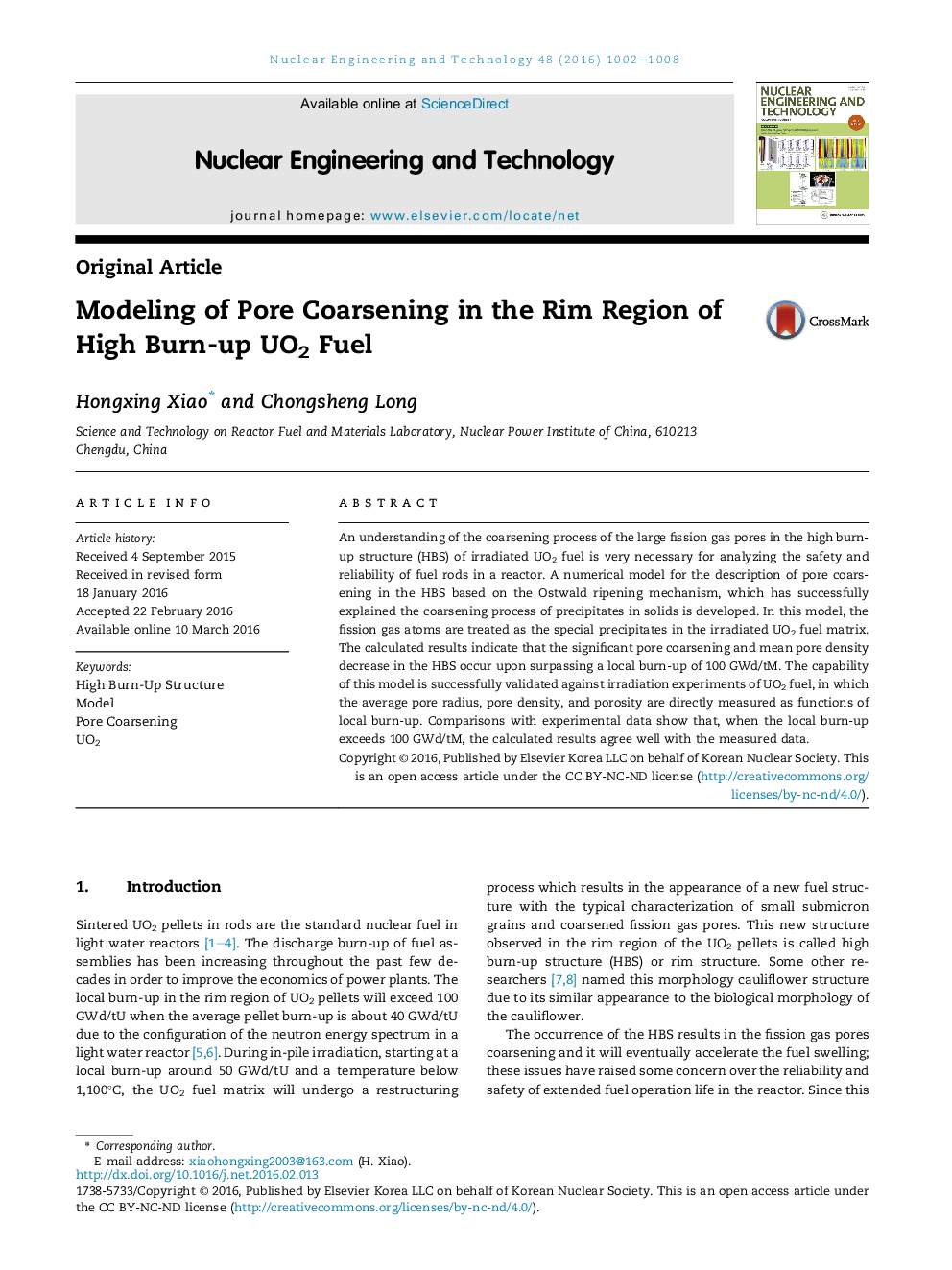| Article ID | Journal | Published Year | Pages | File Type |
|---|---|---|---|---|
| 1739841 | Nuclear Engineering and Technology | 2016 | 7 Pages |
An understanding of the coarsening process of the large fission gas pores in the high burn-up structure (HBS) of irradiated UO2 fuel is very necessary for analyzing the safety and reliability of fuel rods in a reactor. A numerical model for the description of pore coarsening in the HBS based on the Ostwald ripening mechanism, which has successfully explained the coarsening process of precipitates in solids is developed. In this model, the fission gas atoms are treated as the special precipitates in the irradiated UO2 fuel matrix. The calculated results indicate that the significant pore coarsening and mean pore density decrease in the HBS occur upon surpassing a local burn-up of 100 GWd/tM. The capability of this model is successfully validated against irradiation experiments of UO2 fuel, in which the average pore radius, pore density, and porosity are directly measured as functions of local burn-up. Comparisons with experimental data show that, when the local burn-up exceeds 100 GWd/tM, the calculated results agree well with the measured data.
